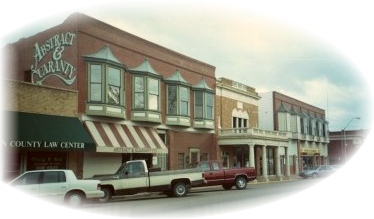
The oldest commercial buildings in Lincoln County, these Sandstone "twin" buildings were built by pioneer merchant A.E. Mascho in 1897 and 1898. Listed on the National Register of Historic Places, these two adjoining buildings are now the home to the Lincoln County Historical Society and Pioneer Museum with its collections housed in a restored, climate-controlled area with proper lighting and ultraviolet light protection.
During restoration work, a large, connecting arched doorway was discovered. The arch is similar to those constructed across the building facade. Called "working arches," the hand-cut sandstones are placed so they support each other and the weight above.
The Museum houses 8,000 square feet of displays that depict early pioneer life. Visitors to the museum are first greeted by the old-fashioned traditional "general store," replica of the traditional small town information and supply center. The town post office and telephone switchboard is included.
The Tilghman Exhibit showcases memorabilia of Chandler's legendary U.S. Marshal, Bill Tilghman and the first copy of the original movie he made in partnership with Benny Kent, "The Passing of the Oklahoma Outlaw." Recently, the story of Bill Tilghman was portrayed by actor, Sam Elliot, in a Hollywood production.
Other exhibits include a printing and publishing display featuring a Linotype type-setting machine, a genealogy department, physician and dental offices, one-room school, cobbler, milliner and seamstress shops, the Embry Military Exhibit, and the Route 66 exhibit entitled "26 Skidoo!" The upstairs gallery features a replica of living quarters used by residents who owned or operated the store below.
In the west section of the museum is the Hoffman Library and Armstrong Marionette Theater teaching Oklahoma history through marionettes. Public performances, puppet camps, and workshops are scheduled throughout the year.
Don't leave without asking to see Oklahoma's only remaining brick outdoor restroom, more often called the "privy". It was built about 1910 and featured a primitive, but then, very advanced mechanical commode. It has been restored, but not to its original public use.